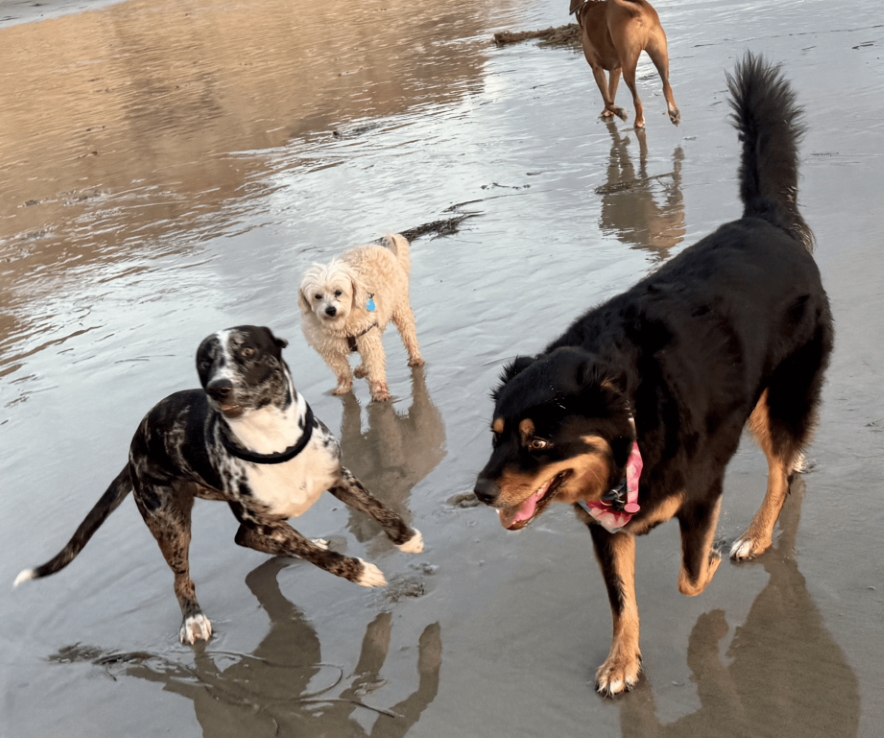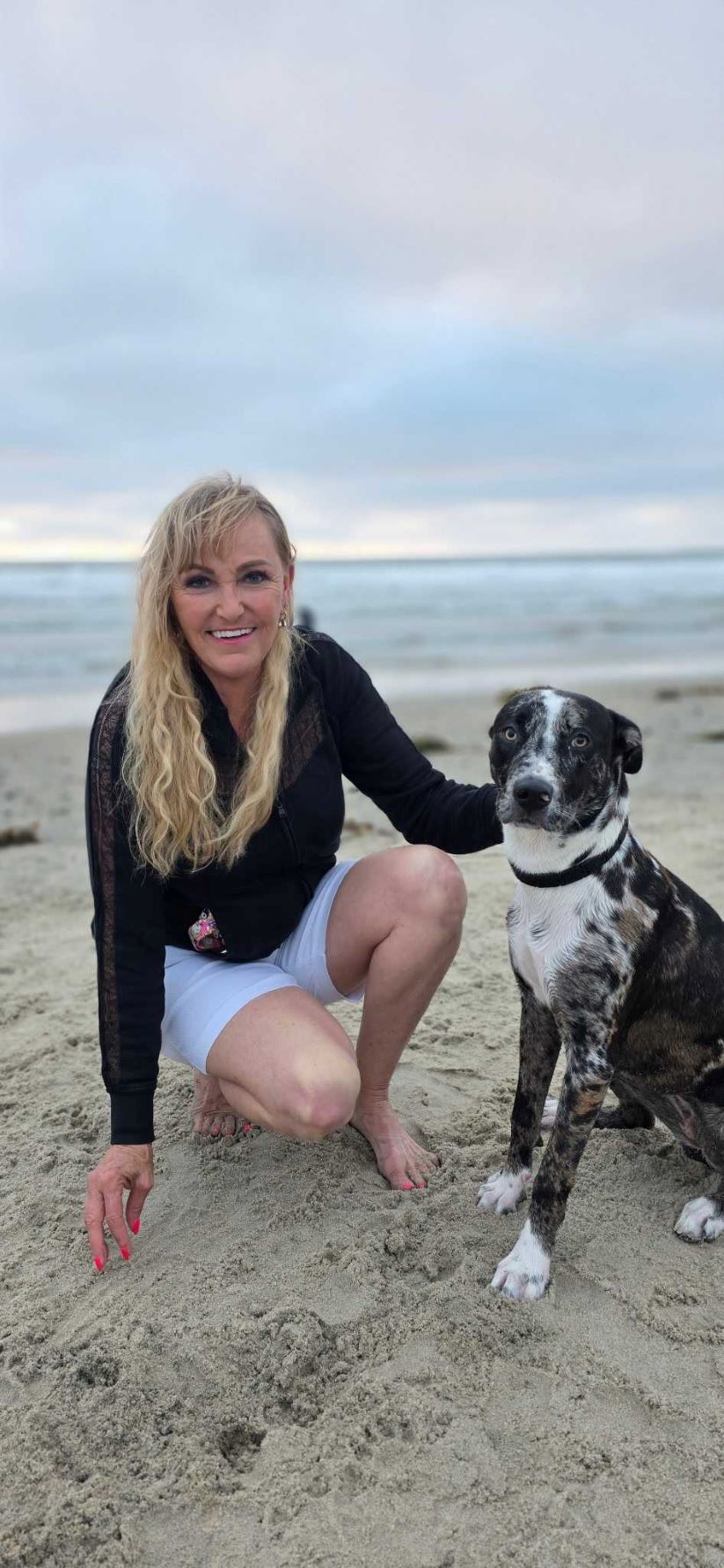
Bringing home a new puppy means accepting responsibility for more than just feeding and exercise. Socialization stands as one of the most significant factors in raising a confident, well-adjusted dog. Without proper exposure to different environments, people, and situations, dogs can develop fear-based behaviors that limit where they can go and what they can experience. A well-socialized dog can accompany you to outdoor patios, stores, beaches, and parks—expanding their world far beyond the backyard fence.
Many San Diego dog owners discover too late that their adult dog struggles with basic outings because they missed early socialization opportunities. The good news? It’s never too late to start working on these skills. Whether you have an eight-week-old puppy or a three-year-old rescue, consistent exposure to new experiences can transform your dog’s confidence and behavior. Professional guidance from a qualified trainer like Dog Busters can help you navigate this process safely and effectively, ensuring your dog develops into a companion who thrives in various settings.
Why Socialization Changes Everything
Dogs are naturally social animals, but they need guidance learning how to interact appropriately with the world around them. Puppies who spend their early months isolated or exposed only to home environments often grow into anxious adults who bark, lunge, or hide when faced with unfamiliar situations.
Proper socialization teaches your dog that new places, sounds, and people aren’t threats. This learning process builds confidence and reduces stress responses. A socialized dog remains calm when a stranger approaches, doesn’t panic at the sound of a shopping cart, and can walk past other dogs without reactivity.
The Early Months: When to Start
Puppies have a prime socialization window between roughly three and fourteen weeks of age. During this period, they’re naturally more receptive to new experiences and less likely to develop lasting fears. However, this doesn’t mean older dogs can’t learn—it simply means early training provides advantages.
Start socialization as soon as your veterinarian confirms your puppy has adequate immunity through vaccinations. Even before full vaccination, you can carry your puppy to safe locations where they can observe the world without touching potentially contaminated surfaces.
Real-World Training Locations
Taking your puppy to diverse environments prepares them for real-life situations. Here are proven locations for socialization training:
- Dog Beach and dog parks: These spaces let your puppy interact with dogs of different sizes, breeds, and play styles while learning proper canine communication and recall commands around distractions.
- Retail stores like Home Depot and PetSmart: The smooth floors, shopping carts, overhead announcements, and crowds of people create controlled exposure to sights and sounds your dog will encounter throughout their life.
- Community spaces like the Humane Society and thrift stores: These locations introduce your dog to different environments with varying energy levels, helping them adapt to both quiet and busy settings.
It’s Never Too Late to Start
If you adopted an adult dog or missed early socialization with your puppy, don’t lose hope. Older dogs can absolutely learn to handle new situations—progress just requires more patience and potentially slower exposure.
Start with low-stress environments and gradually increase difficulty. An adult dog who’s nervous around people might begin with quiet observation from a distance before moving closer. The key is working at your dog’s pace, never forcing them into situations that trigger panic or aggressive responses.
Many dogs who seemed “set in their ways” have successfully learned to enjoy outings they once couldn’t handle. Consistency matters more than the dog’s age.
What Well-Socialized Dogs Can Do
A well-socialized dog opens doors to experiences that strengthen your bond and enrich both your lives. These dogs can:
- Join you at outdoor restaurants and cafes where dogs are welcome
- Travel more easily, staying calm in cars, hotels, and unfamiliar locations
- Attend family gatherings without stress or behavioral issues
- Participate in activities like hiking, camping, or beach days
- Visit friends’ homes without jumping, barking, or destructive behavior
- Handle veterinary visits and grooming appointments with less anxiety
Making Socialization Work
Success requires planning and awareness. Always bring high-value treats to reward calm behavior in new situations. Keep initial visits short—fifteen minutes is plenty for a young puppy. Watch your dog’s body language for signs of stress like excessive panting, whale eye, or tucked tail.
If your dog shows fear, don’t force interaction. Create distance and let them observe from a comfortable spot. Pushing a frightened dog closer to their trigger can worsen fear responses rather than build confidence.
Consider varying the time of day for outings. Morning visits to a store look and sound different than evening visits, providing different socialization experiences.
Giving Your Dog a Bigger Life
Dogs stuck in backyards miss opportunities for mental stimulation, physical exercise, and bonding experiences. A well-socialized dog becomes a true companion who can share more of your life—not a pet who must be left behind or causes stress when guests visit.
The investment you make in socialization pays dividends for years. Instead of managing a reactive or fearful dog, you’ll have a confident partner ready for adventures.
If you need guidance creating a socialization plan tailored to your dog’s needs, Dog Busters provides professional training services throughout San Diego. Contact us to help your dog reach their full potential.

